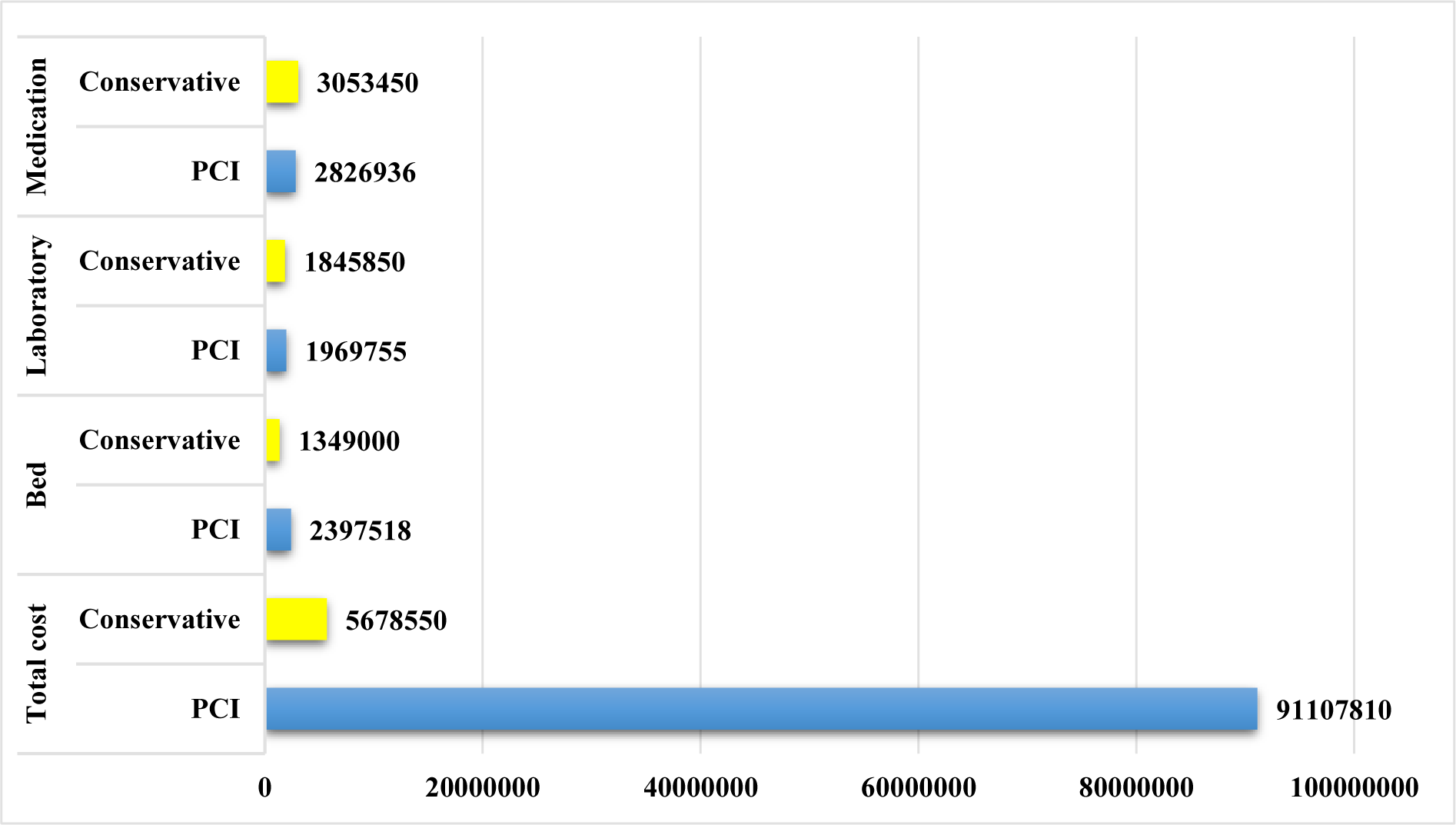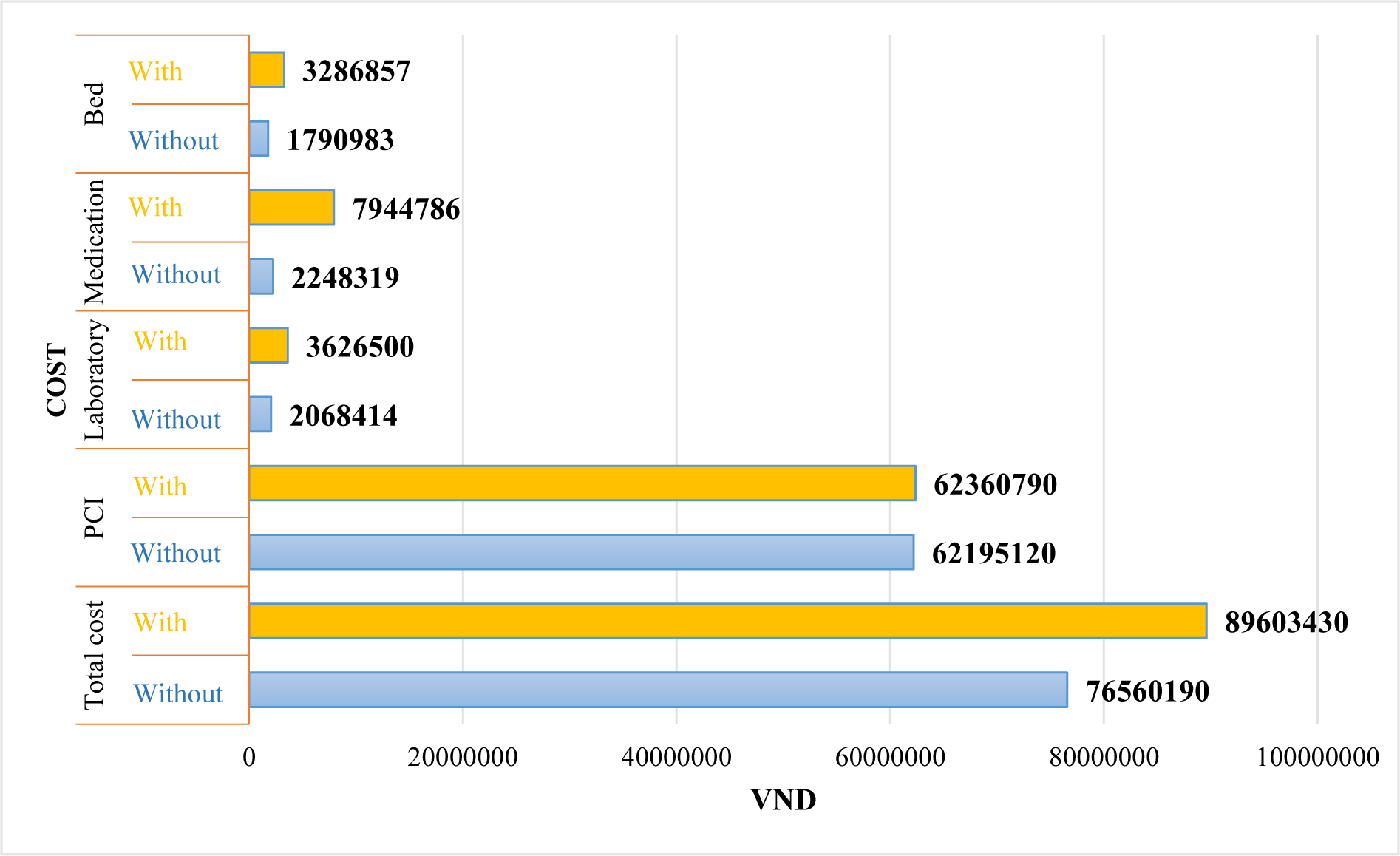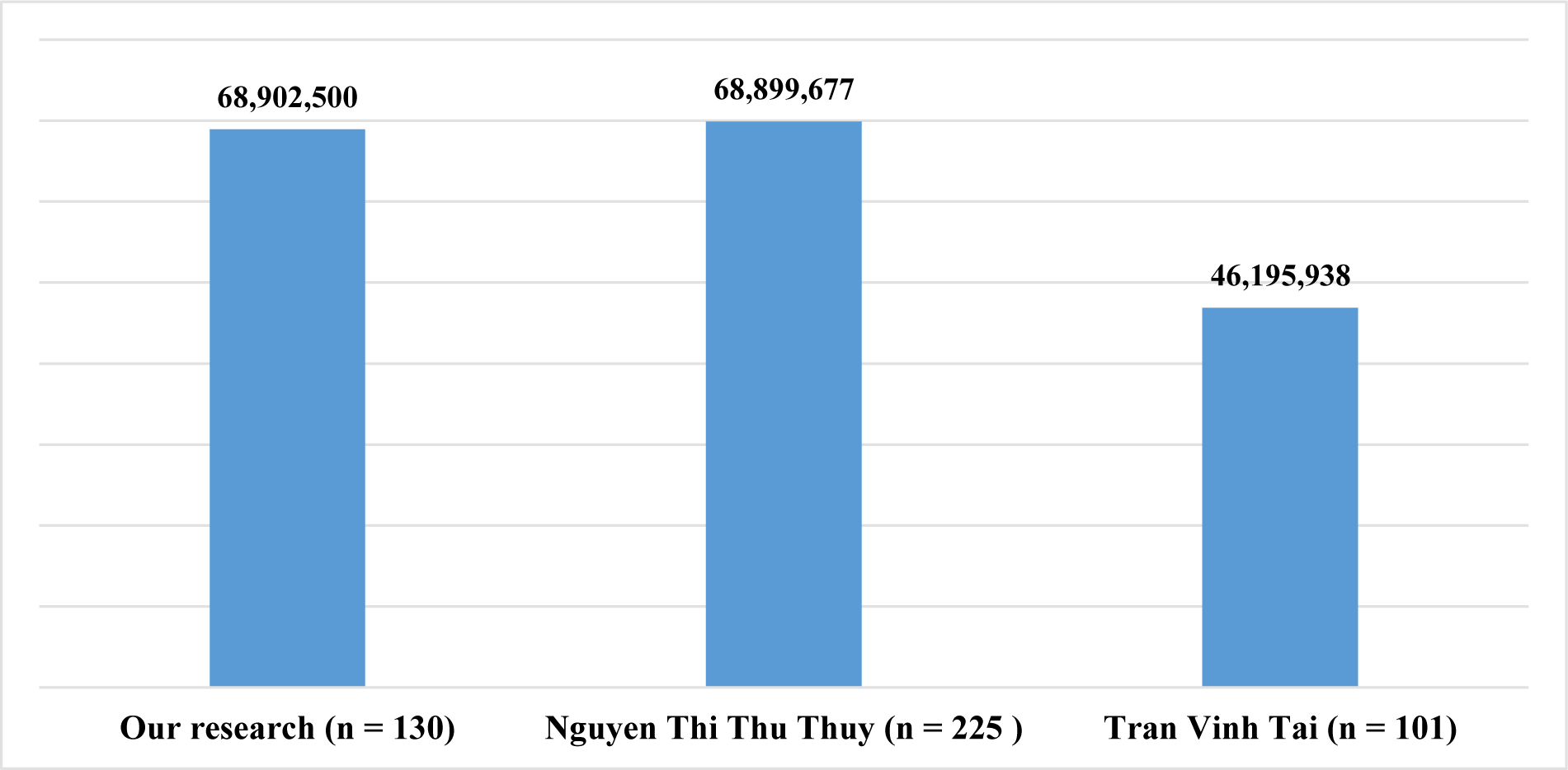1. INTRODUCTION
Acute myocardial infarction (MI) remains one of the leading causes of death in the world general and in Vietnam, in particular [1]. MI is increasingly becoming an important public health problem. The importance of the disease was characterized by its high prevalence and serious clinical consequences, which in turn lead to increase in treatment cost and medical burden [2]. Acute MI is divided into subgroups of ST-elevation MI (STEMI) and non-ST-elevation MI. STEMI account for about 40% of cases of acute MI in the ACTION (the Acute Coronary Treatment and Intervention Outcomes Network Registry) study (GWTG) [3]. In the United States, the median cost for all patients hospitalized in 2009 was $19,349 ([IQR] = $14,660 – $26,282) [4]. According to the research by Tran et al in 2012 at Nguyen Trai hospital, the mean cost for treatment of MI was 15,589,361 VND [5]. In 2017, Nguyen et al reported that mean cost for STEMI patients was 69,899,677 VND at Ho Chi Minh City Heart Institute [6].
In addition, the application of advanced treatments such as percutaneous coronary intervention (PCI) and using new generation of fibrinolytic agents also increased treatment cost [2]. Many serious complications may occur such as arrhythmias, heart failure, and hospital infections. When these complications occurred that significantly increased the length of stay in hospital. All contributed to increase treatment cost [7]. A study that reveals treatment cost helps us assess medical fee, which patients have to pay. It is therefore necessary to choose an effective and economic treatment strategy for patients. Thus, in this study, we sought to describe acute ST-elevation MI treatment cost and analyze related factors to acute ST-elevation MI treatment cost at Cho Ray Hospital.
2. MATERIALS AND METHOD
This retrospective cross-sectional study was performed at Cho Ray Hospital, Ho Chi Minh City, Vietnam, between June 2018 to February 2019.
The inclusion criteria were the admitted patients who diagnosed with acute ST-elevation myocardial infarction based on Third Universal definition of MI [8]. Medical reports had all needed information for the study.
The exclusion criteria were the patients who was diagnosed with therapy, had to be required complications and heathcare associated infections at another hospital before transferred to Cho Ray Hospital.
Baseline demographic (age, gender, length of stay, Killip classification, location of MI, and left ventricular ejection fraction), complications, and therapy strategies including PCI or conservative treatment were recorded. Total direct cost were the sum of PCI cost, medication cost, bed cost, and laboratory cost. These costs are recorded from the bill declaring the patient’s treatment cost during the hospital stay. These costs are not deducted from social insurance payment. Currency unit was Vietnamese Dong (VND).
This study was approved by the Institutional Review Board of the Cho Ray Hospital. Patient information was kept confidential. Informed consent was not required for this study.
Data was analyzed using Stata statistics version 13 for Windows (StataCorp. 2013. Stata Statistical Software: Release 13. Collage Station, TX: StataCorp LP). Continuous variables were expressed as the mean ± Standard deviation (SD) for normal distribution or the median (interquartile range) for non normal distribution, and compared using the Student t test or MannWhitney test as appropriate. Nominal variables were compared by Pearson chi-square analysis. A p value of < 0.05 was considered statistically significant.
3. RESULTS
From June 2018 through February 2019, a total of 130 patients admitted to Cho Ray Hospital, met the inclusion criteria of the study.
The mean (SD) age of the research population was 62.9 (12.6) years. In which, male patients (93 patients; accounting for 71.5%) were 3 times more than female patients (37 patients; accounting for 28.5%). The median left ventricular ejection fraction was 41% ([IQR]: 35 – 50%). The proportion of patients evaluated when at admission and categorized in each Killip class (I, II, III and IV) were 87.7%, 3.8%, 2.1%, and 5.4%, respectively. Anterior MI patients had the highest proportion of the location of MI (n = 84; 64.6%), then inferior MI patients (n = 42; 32.3%), and other patients (n = 4; 3.1%). Table 1 revealed some clinical characteristics between the PCI group and the conservative group. The median total costs for STEMI treatment was 68,902,500 ([IQR]; 57,372,000 – 104,266,000) VND as shown in Table 2.
In particular, the total direct cost of the PCI group was 16 times higher than that of the conservative group (91,107,810 vs 5,678,550 VND). Bed cost was about 2 times higher in the PCI group than in the conservative group. Other costs were approximately equal between the two groups (Figure 1).
Among 130 patients, 14 (10.8%) developed complications: hospital-acquired infection (n = 8), cardiogenic shock (n = 3), and arrhythmia (n = 3).
Clinical characteristics among with and without complications group were shown in Table 3. In particular, the rate of Killip I was 91.4% in patients without complications and higher than in patients with complications (57.1%), p = 0.001. When complications occurred, the length hospital of stay was significantly increased (p = 0.02) and costs also increased.
The total cost in the complications group was higher than uncomplicated. For instance, the laboratory cost increased by about 1.5 times; the bed cost increased about 2 times, and the cost of medication treatment increased by about 3 times (Figure 2).
4. DISCUSSION
The average age of research population was similar to the research by Nguyen et al (2017) at Ho Chi Minh City Heart Institute (62.9 and 65.6 years) [6]. We revealed that the length of stay would increase with percutaneous coronary intervention group because patients had been undergone a procedure, so patients need to be followed-up after PCI proceduce. Similarly, when patients had complications, the length of stay would increase. The length of stay for STEMI treatment in the study was mean ± SD = 7.1 ± 3.3 days shorter than in the study by Nguyen et al which was 9.31 ± 6.18 days [6]; Tran was 15 ± 7 days [5]. This might be due to inpatient-overload condition at Cho Ray Hospital, patients were transferred to satellite hospitals. Clearly, the direct cost of acute MI treatment was increased over time. Comparion between total cost in these studies was shown in Figure 3.
Based on strategy, the total cost in the PCI group (84.6% of patients) was about 16 times higher than the conservation group (16.5%). This result was consistent with the result of Nguyen et al (15 times) [6]. When complications occurred during hospital stay, the length of stay increased significantly. In 2015, Nguyen et al reported that mean costs of AMI were $2,503 (approximately 55,066,000 VND) per hospitalization at a regional hospital in Vietnam [9].
According to the World Bank, the average income per capita of the whole country in 2017 was 2,342 USD (approximately 51,524,000 VND) [10]. With such direct treatment costs, patients without social insurance must pay a huge economic burden when they admitted hospital for STEMI treatment. Compared with other diseases, Tran et al (2018) estimated the direct total cost of treating an acute exacerbation of chronic obstructive pulmonary disease (COPD) was 7,605,500 VND. If accompanied with pneumonia, this cost was 21,893,000 VND [11]. The cost for STEMI treatment was higher than COPD treatment.
It is clearly that PCI compared with conservative treatment was associated with a lower mortality in patients with STEMI. The median total cost of the PCI group (Figure 1) was significantly higher than the conservative group. Costs also increased when complications occurred. This study did not analyse the cost-effectiveness aspest of STEMI treatment. The study only revealed the cost of contemporary STEMI treatment in Vietnam and emphasized optimal treatment for preventing complications that the hospitalization costs would be reduced.
The study had a limitation. Total economic burden of illness of STEMI are categorized into two unique components, including direct and indirect costs. The authors only assessed direct costs and could not analyze indirect costs such as transportation costs and productivity losses.
5. CONCLUSION
This study revealed that the direct total cost of STEMI treatment per hospitalization was high. The costs of STEMI treatment were significantly different among strategies. Complications directly affected the costs. So optimal treatment prevents complications that can reduce the costs of treatment in patients with acute ST-elevation myocardial infarction.



